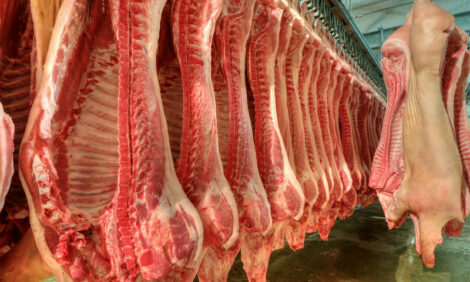



Lactose Brings Benefits to Older Weaners
US - Trial work to assess the value of lactose in the mid to late-nursery phase has shown significant benefits to weaned pig performance.
The investigations, involving a total of 1,320 crossbred pigs, were conducted at three North American universities. The studies evaluated the effects of various levels of lactose in diets during phase three (week 3 and 4 post-weaning) of a four-phase starter programs.
Pigs were weaned at 15 to 20 days (6.2-kg average liveweight) and allotted to five treatments. All pigs were fed a complex phase one diet (20 per cent lactose) the first week post-weaning followed by a complex phase two diet (15 per cent lactose) the second week post-weaning.
Phase three diets containing 0, 2.5, 5.0, 7.5, or 10.0 per cent lactose were fed for week three and four, and then a common, corn-soybean meal diet was fed subsequently, for an additional one to two weeks (phase four).
The source of lactose was Dairylac 80, which contains 80 per cent lactose.
The phase one, two, and three diets were prepared at one site. Pigs were weighed, and feed intake was determined at weekly intervals.
There were eight replications at each station for a total of 24 replications per treatment with five or 23 pigs per pen.
In line increases
As expected, average daily gain (ADG), daily feed intake (DFI), and feed conversion rate were not affected (P = 0.10) during the initial two-week period when all pigs received the same diet. During week three and four (phase three) when the five levels of lactose were fed, ADG and DFI increased linearly (P < 0.01) with increasing levels of lactose, but feed conversion was not affected (P = 0.10).Although the quadratic component was not significant, ADG and DFI reached a numerical plateau at the 7.5 per cent inclusion level of lactose during phase three. Compared with pigs fed the diet without lactose, the 7.5 per cent level of lactose resulted in 350 g of additional BW gain coupled with 420 g of additional feed consumed per pig during phase three, and most of the additional BW gain (294 g) was maintained through the end of the five to six-week study.
These results suggest that pigs respond to dietary lactose during the mid to latter phase of the nursery period and that the response was obtained under different management and facility conditions.
References:
GL Cromwell, GL Allee and DC Mahan, University of Kentucky, Lexington 40546; and University of Missouri, Columbia 65211; and The Ohio State University, Columbus 43210 J. Anim Sci. 2008. 86:127-133. doi:10.2527/jas.2006-831








